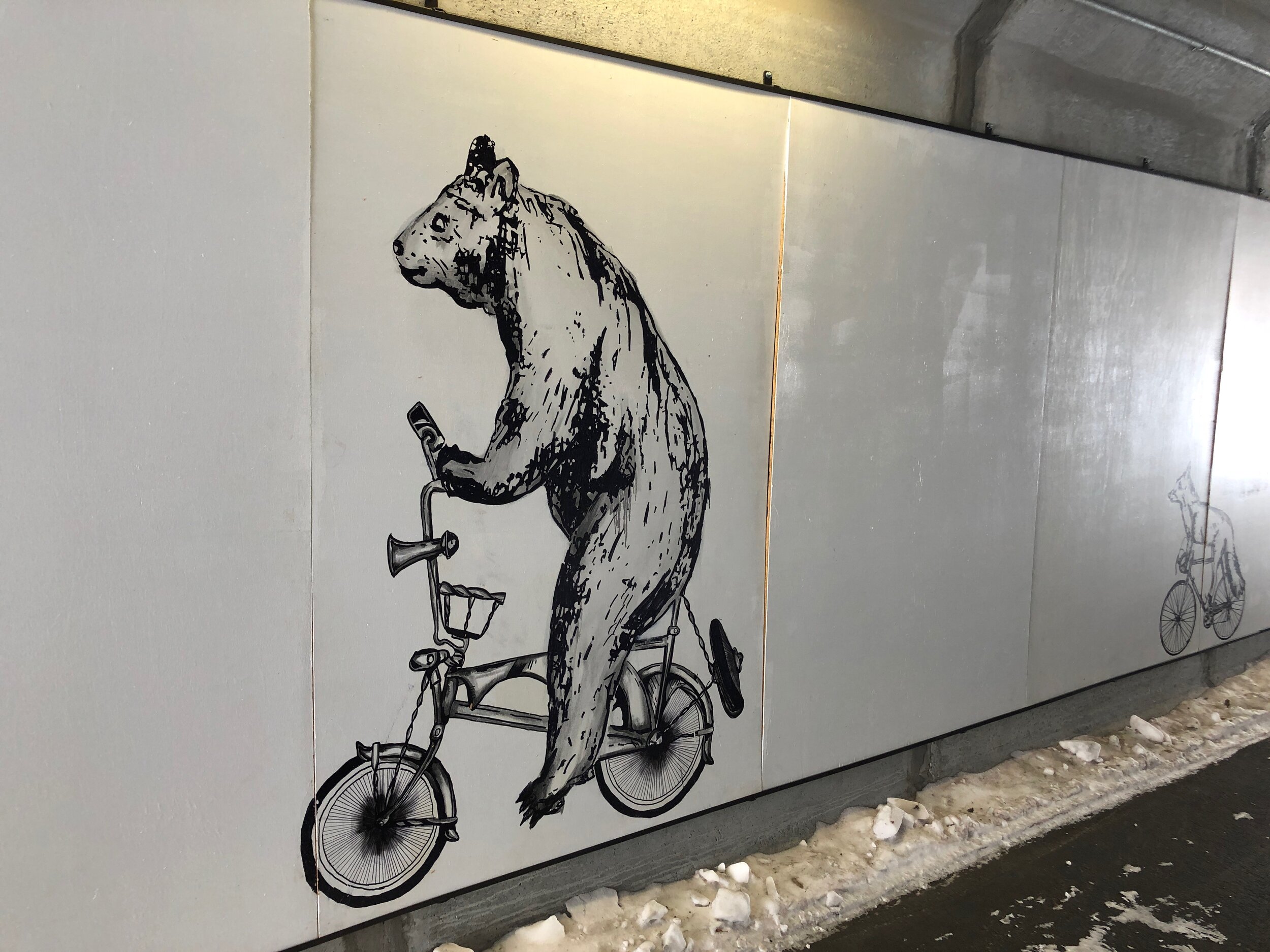PATH22 Murals
-
Cruising Critters
Artist: Marco Miller
Installation Date: March, 2021
Location: PATH22 Underpass at Stilson, Wilson WY
Partners: Jackson Hole Community Pathways and JH Public Art Russ Garaman Park
-

East Mural: Root, Culture and Migration
Artist: Pedro Avelino Alcántara
Installation Date: November, 2023
Location: PATH22 Underpass at Skyline Ranch
Partners: Jackson Hole Community Pathways and JH Public ArtTo learn more about Pedro Avelino Alcántara, view the Maven Media film below.
-

West Mural: The Shape of the Road
Artist: Francisco Jesús Saldaña Perez
Installation Date: April, 2024
Location: PATH22 Underpass at Skyline Ranch
Partners: Jackson Hole Community Pathways and JH Public Art
To learn more about Francisco Jesús Saldaña Perez, view the Maven Media film below.
Root, Culture and Migration
Tlaxcala comes from the Nahuatl: Tlaxcalli - tortilla and Lan - place; therefore, its etymology is: place of tortillas.
By the year 1518 Tlaxcala was organized as a republic, divided into 4 lordships: Tizatlán, Quiahuiztlán, Ocutelulco and Tepeticpac. Each manor was governed by a Tecuhtli whose translation would be Senator, and this government had its headquarters in Tlaxcala. Hueyotlipan belonged to the Quiahuiztlán lordship. In the center you can see the old symbol of Tlaxcala: Two hands emerge from a hill making a tortilla.
The participation of Tlaxcala was decisive in overthrowing the Aztec empire, and the Hispanic-Tlaxcalan alliance was agreed upon. After one of the battles (known as the Sad Night) on July 8, 1520, the Hispano-Tlaxcalteca army returned defeated; Hernán Cortéz, in addition to being injured, was afraid because he came to think that here they could easily put an end to his existence. They were pleasantly received in Hueyotlipan; here they healed their wounds and satisfied their hunger and thirst. The image represents Maxiscatzin, one of the four Tecuhtlis, who came to receive the Hispano-Tlaxcalteca army and endorse the alliance.
Second part: represents a little of our landscape, our gastronomy and our culture with an offering of the day of the dead and our patron saint festivities; we carry all this like luggage wherever we go. With the man, always supported by his wife and son, I allude to the family unit that is a very important part of the Mexican ideology.
Third part: a dark-skinned hand and a white hand shake and help each other and the children feel protected, children of various races play happily doing a children’s round protected by the flag of both nations.
Author: Pedro Avelino Alcántara
Artist Bio:
Alcántara was born in Hueyotlipan, Tlaxcala, Mexico. He attended “La Esmeralda'' National School of Painting and Sculpture, assisted master painter Desiderio Hernández Xochitiotzin (the last muralist of the Mexican School) on a Tlaxcala chapel mural, and worked with the sculptor Mario Jasson in his foundry in North Hollywood, California. Alcántara returned to his hometown and taught drawing and painting at the Cultural Center and worked as a coordinator of the Center.
With his brother, he restored the ruins of the ex-convent in Hueyotlipan and as of July 2001, this impressive space serves as the Cultural Center of Hueyotlipan.
Alcántara has alternated institutional work with creating art and hopes to retire to become a full-time painter.
The Shape of the Road
This mural portrays an immigrant integrating into a new world and new customs. It reflects some of the artist’s personal journey and experience moving to another country. Small details from each world are depicted, creating a fusion of cultures. The struggle of moving to another place, taking only a backpack to start a new chapter of life, is also portrayed.
Author: Francisco Jesús Saldaña Perez
Artist Bio:
Francisco Jesús Saldaña Perez is a contemporary realist artist from Tlaxcala, Mexico. His artistic career began as a six-year-old child when he drew landscapes of his famous hometown. His mother's cartoons inspired him to draw, starting with stick drawings on the ground and developing into more detailed and realistic portrait drawings. He moved to Jackson, Wyoming and enrolled at Jackson Hole High School when he was about 15 years old. He developed his art to evoke more emotions through his work and learned to use new materials.
Today, Saldaña’s main source of inspiration comes from showing his own identity. Saldaña considers himself a perfectionist artist who has not only been influenced by artists but also by the world and his state of Tlaxcala. He currently assists, teaches, and instructs children in the world of art and continues his career as a professional artist participating in various painting exhibitions.











